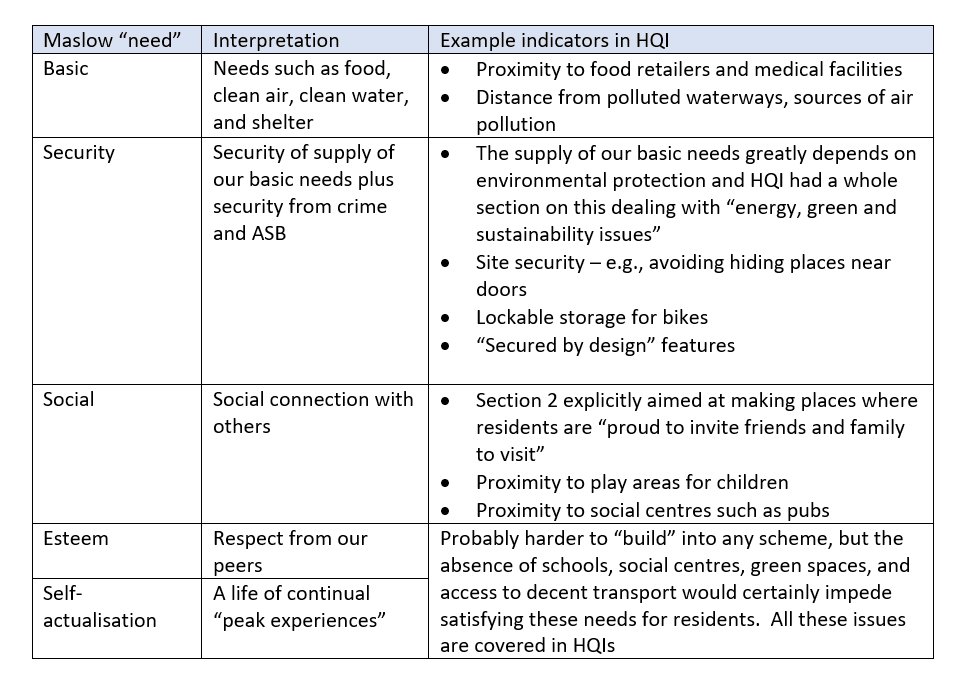UK Government’s Levelling Up agenda aims to give ‘everyone the opportunity to flourish’. This “people” focussed aim seems to align with other emerging trends: examples include “placemaking” [1], social value, wellbeing and the “S” part of ESG. Whilst this is a positive and beneficial trend, there is a glaring gap. There is no single, science-based metric that describes what success looks like if these agendas were to be successful. Following the adage that you can only manage what you measure, a metric would also be useful for monitoring progress towards the ideal and for holding ourselves to account.
We have used Maslow’s hierarchy of needs elsewhere [2] as a suggested framework for such a metric. As well as including environmental protection in the “security” level, the framework also includes the wellbeing of people using life satisfaction metrics.
In the house building sector, there used to be a scheme called Housing Quality Indicators (HQI’s). It scored new housing schemes out of a 100 based on things that would contribute to residents’ wellbeing. Is it time for a similar scheme to emerge again?
Here’s some examples of what the HQI contained and how those things will contribute to the overall wellbeing of people in that particular scheme. We’ve mapped them onto Maslow’s famous hierarchy of human needs:

HQIs were used to determine grant funding for social housing schemes and all the scores were loaded onto a government database. Is it time to look at this great and plentiful source of data? Here’s an idea for a research project. Go back to each scheme that had an HQI score and survey residents for their life satisfaction scores (there is a science base to this approach [3]). Then, correlate the HQI scores with the life satisfaction scores and environmental performance of the area. This approach could reveal what aspects of a new build site really do have an impact on resident’s life satisfaction and, hence, provide true, measurable evidence of what constitutes a “levelled up” place.
To conclude, some kind of science-based metric that covers human wellbeing as well as environmental protection is needed, if we, as a society, truly want to manage our way to a sustainable future.
If you would like to chat about environmental and/or placemaking strategies, please be in touch.
[1] Placemaking- DLUHCS National Design Guide
[2] Placemaking – Maslow
